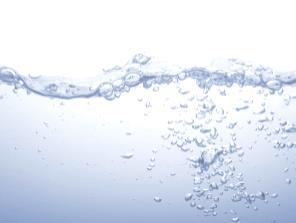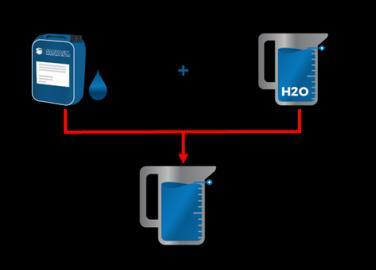Sanosil S015

Disinfectant

For the disinfection of water, waste water and liquid waste www.sanosil.com







For the disinfection of water, waste water and liquid waste www.sanosil.com





… Ideal for the treatment of laboratory waste water and liquid waste.
Effective water/waste water disinfection with a long-lasting effect

CH-FOPH (Swiss Federal Office of Public Health) biocidal product approval for PT 2.4 (hospital waste/waste water)
It can be disposed of via the sewage system
Highly effective against biofilms, protein deposits and VBNC germs
Easy and safe application (no hazardous substance)
No chlorine/chlorine derivatives, QAC, aldehydes, phenols, bromine or isothiazolinones

Suitable for autoclaving in application concentration
With catalytically enhanced hydrogen peroxide
Shelf life of over 2 years
High-quality product made in Switzerland
SANOSIL AG • CH-8634 Hombrechtikon • Switzerland
E-mail: service@sanosil.com www.sanosil.com




Sanosil S015 is a proven disinfectant for water and water systems as well as for the inactivation of waste water and liquid waste (PT.2.4).


It is suitable for autoclaving in application concentrations and can be disposed of via the waste water drainage system in application-standard quantities. This, in turn, makes it highly suitable for the chemical inactivation of liquid laboratory waste. Hydrogen peroxide is used as the active ingredient. It is also stabilised and its disinfecting effect is catalytically enhanced several times over by a minimal amount of silver ions. This process can increase the disinfection effect by up to 800%.
After application, the hydrogen peroxide completely decomposes into water and oxygen. The minimal amount of silver remaining after the decomposition of the peroxide delays the multiplication of germs. S015 therefore exhibits not only biocidal but also preservative properties in water systems.



Sanosil S015 is relatively easy to apply and is not a hazardous or flammable substance. It also does not cause unpleasant smelling vapours and is not subject to any special storage or transport regulations.
PRODUCT TYPE
Concentrated (no hazardous substance)
SUITABILITY
Water disinfection

- Process water treatment, irrigation systems


- Content disinfection (tanks, pipes, drinking water systems)
- Legionella control



- Disinfection of waste water and liquid waste
Bacteria, yeasts, enveloped viruses / noroviruses (limited virucide +), fungi
SHELF LIFE 2 years
CONTAINS
Sanosil S015 also is exceptionally effective against biofilms, mucus and protein deposits. This also means that it achieves great results when used to clean and disinfect lines and hoses in suction installations.
7.5g/100g of hydrogen peroxide 0.0075g/100g of silver
The oxygen (1O2/-O2) released by the hydrogen peroxide attacks the cell walls of the microorganisms. Oxidation (cold combustion) denatures and destroys them.

The effect is significantly intensified/accelerated by silver ions, which enhance the effect of the peroxide in a catalytic process. They also block the germs' metabolism (where applicable) and ability to multiply.
SANOSIL AG • CH-8634 Hombrechtikon • Switzerland
E-mail: service@sanosil.com www.sanosil.com

The inactivation of contaminated waste is a vital factor in minimising the leakage of organisms from the laboratory and eliminating any risk to humans and the environment. Local regulations usually stipulate that organisms must be safely disposed of for class 1 activities and inactivated for class 2–4 activities.
For laboratories from BSL2 and higher, we recommend collecting liquid waste and cell culture supernatants using suction bottles. We also recommend chemical inactivation on site and subsequent autoclaving.

It may not be necessary to carry out autoclaving procedures for safety levels 1–3 if cultures, concentrations of microorganisms and any contaminated waste may be inactivated on site (levels 2 and 3) or safely disposed of (level 1) through chemical inactivation with a comparable effect.
Legionella



EN13623: 7 ml/l of Sanosil S015 in 30 minutes

EN13623: 0.5 ml/l of Sanosil S015 in 4 hours
ELISA-Waste water, practical series of experiments: (bacteria, fungi)
From a microbiological standpoint, chemically inactivated liquids can be safely disposed of into the environment if humans and the environment are protected from hazards and adverse effects during their disposal. The pollution with chemical substances must comply with the legal requirements of water protection and should be kept as low as possible.

6.6 ml S015 in 45 min = <300 KbE (limit value for the disposal of laboratory waste water via the sewage system) KbE, no growth on SDA/TSA plates in 3 and 5 days 33 ml/l in 60 minutes = 0

Sanosil S015 is ideal for meeting the requirements of inactivating agents used for this purpose.

Important: Since liquid waste may vary depending on the chemical composition, the quantity as well as the type of microorganisms, the chosen method (with/without autoclaving, suitable dosage and contact time, etc.) must always be validated on an individual basis. Our specified dosages and exposure times are based on well-founded tests and practical experience, but may deviate in individual cases.
SANOSIL AG • CH-8634 Hombrechtikon • Switzerland
E-mail: service@sanosil.com www.sanosil.com

 Sanosil S015
Sanosil S015
• Liquid waste to be disinfected must be free of lumps/coarse material particles. In addition to clogging suction pumps or hoses, they can also prevent uniform mixing. For this reason, first remove coarse lumps from liquid waste by means of filtering or straining.
• Add 33ml of Sanosil S015 per litre of liquid waste. (Reference value) Mix the contents of the container with the disinfectant by agitating or swirling. Caution: do not seal the container for the duration of the reaction so that any developing oxygen can escape.


Important: The mixing vessel must be large enough for a (relatively short-lived) foam layer to form where necessary. (Reaction of hydrogen peroxide with organic material, in particular with liquids containing catalase or blood components).


Sanosil S015


• Alternatively, add 25 ml of S015 to the empty, clean suction bottle, then add another 20 ml of Sanosil S015 to the full bottle.
• Further treatment: after the reaction time (min. 60 minutes), the cell waste may either be autoclaved or (if the practical validation confirms a comparable effect through treatment with S015) disposed of directly via the sewage system. Make sure that the water is thoroughly mixed with the waste water in the sewage system so that the pH value does not fall below pH 6.5 after it is mixed with the waste water.



33 ml of S015 1l of liquid
> 60 min reaction time

+SANOSIL AG • CH-8634 Hombrechtikon • Switzerland E-mail: service@sanosil.com www.sanosil.com



